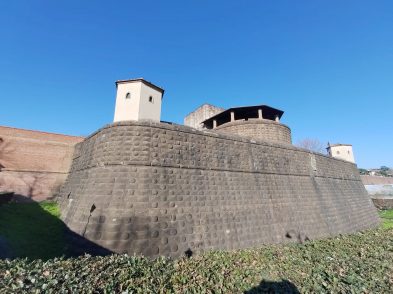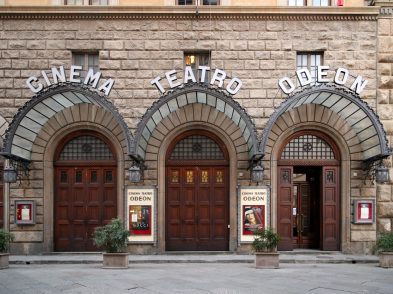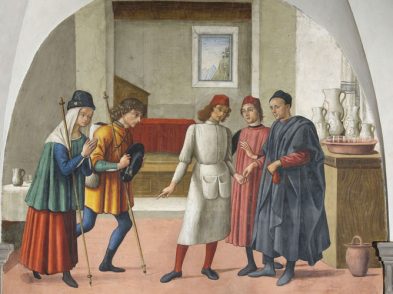According to John Mason Neale’s Christmas hymn of 1853, when the good King Wenceslas rushed out with his servant to assist a poor man gathering fuel in the freezing winter weather, it was on the Feast of Stephen. In many continental European countries, including Italy, this holy figure is always celebrated on December 26, the day after Christmas. The saint’s widespread popularity over the centuries is evidenced by the many churches named for him, including Florence’s Santo Stefano al Ponte.

Revered for his charity, Saint Stephen was one of the first deacons of the Christian church. His name, from the Greek word stephanos (‘crown’), fittingly representing the martyr’s crown he earned in 36 AD as the first of Christ’s followers to die for his beliefs.
Probably a Hellenistic Jew, Stephen is said to have converted to Christianity when Jesus miraculously cured his sick horse. Renowned for his oratory gifts, he brought countless new followers to believe in Christ, provoking the jealousy of the leaders of the synagogues, leading to false accusations of blasphemy. Whilst on trial before the Sanhedrin court, he experienced a theophany—he said that he saw the risen Christ with God—which so outraged the elders of the court that they had him stoned to death.
In December 415, after the Emperor Constantine ordered an end to the persecutions of Christians, a priest named Luciano reputedly dreamt about the place where Saint Stephen’s body was buried, and soon relics of the saint abounded, propagating a cult venerating him. Over time, along with his association with charity and martyrdom, Stephen also became known as the patron saint of deacons; of horses; of stonemasons and bricklayers; of coffin makers; and of those who suffer from headaches.
In Italy, the cult of Saint Stephen quickly became widespread, as evidenced in place names like Porto Santo Stefano, in the Maremma, and Santo Stefano di Sessanio, in Abruzzo. He also became the patron saint of innumerable towns. Among these is Prato, whose beautiful cathedral is dedicated to him, and whose famous fresco cycle in the high chapel depicting scenes from the saint’s life were painted by Filippo Lippi between 1452 and 1465 (and include what is probably a self-portrait of the artist).
As evidence of his popularity, Rome has more than 30 churches and chapels devoted to the saint, the most famous being Santo Stefano Rotondo al Celio, built in the fifth century by Pope Simplicio. Florence, too, has several churches named for him: Santo Stefano di Badia, in via del Proconsolo; Santo Stefano in Pane, near piazza Dalmazia; and Santo Stefano a Ugnano, southwest of the city.
Dating back to the eleventh century, the oldest of Florence’s churches dedicated to the saint is Santo Stefano al Ponte, tucked away in piazza Santo Stefano, very close to the Ponte Vecchio. The lower area is the earliest part of the building, and only the part around the main door retains evidence of the Romanesque façade of white and green marble. After the changes to the exterior in the fourteenth century, the interior was renovated between 1649 and 1655, when Francesco Tacca converted the original three naves into a single one and added an elegant staircase designed by Bernardo Buontalenti in 1574, which Tacca had transferred from the church of Santa Trinita.
The twentieth century was not kind to the building. The church was badly damaged when the buildings surrounding the Ponte Vecchio were blown up during World War II; it virtually required rebuilding. Sitting next to the Arno, it was also ravaged by the 1966 flood. The diocesan museum annexed to the church needed extensive restoration after the mafia bombing in via dei Georgofili in 1993.
Today, the Santo Stefano al Ponte complex is a place of art and music. Reopened in 1996, the museum displays works that have been collected from churches around the diocese to protect them from damage or theft, among them such masterpieces as a Madonna by Giotto, Paolo Uccello’s Adoration of the Magi and a triptych by Filippo Lippi. The church, now deconsecrated, also holds many artworks and is a venue for concerts and temporary art exhibitions.
And how is Saint Stephen commemorated today? Long a church feast day, of course, December 26 became an official holiday in Italy only in 1947. In Tuscany, Saint Stephen’s day is usually a time for families to rest, eating leftovers from Christmas dinner, maybe watch a film at home or enjoying a day out at the movies or a museum. They might even spend time planning for another important saint’s feast, the night of Saint Sylvester, better known to most of us as New Year’s Eve.
During the winter months, the Diocesan Museum of Santo Stefano is open on Fridays from 3.30 to 6.30 pm; entry is free.
Currently on show at Santo Stefano al Ponte is Gunther Von Hagens’ Body Worlds, open daily until March 20, 2016. For more information, www.theflr.net/BodyWorlds








